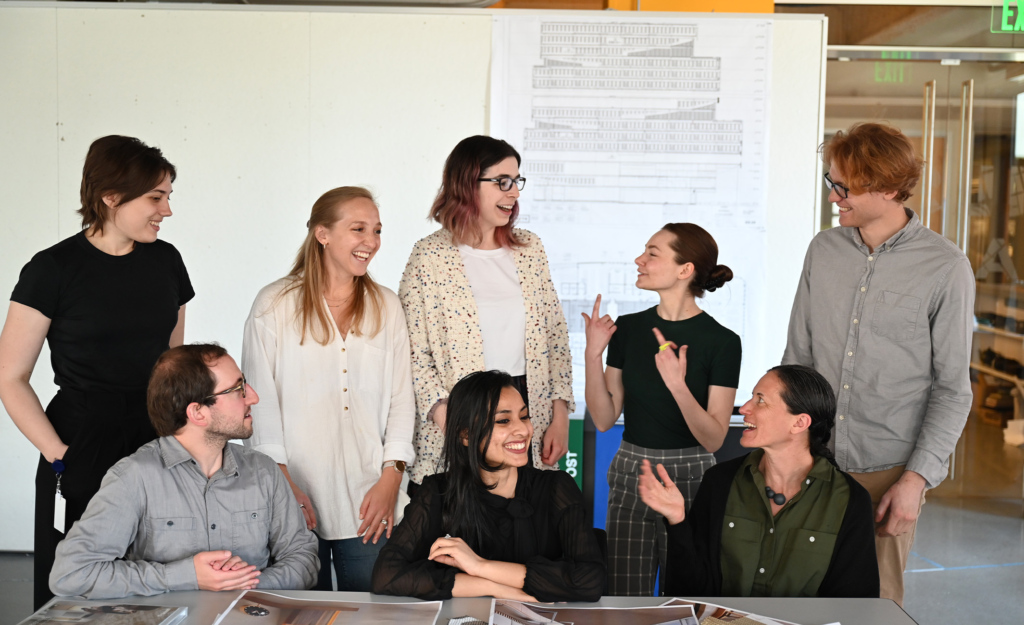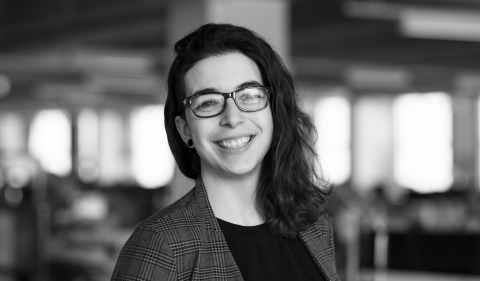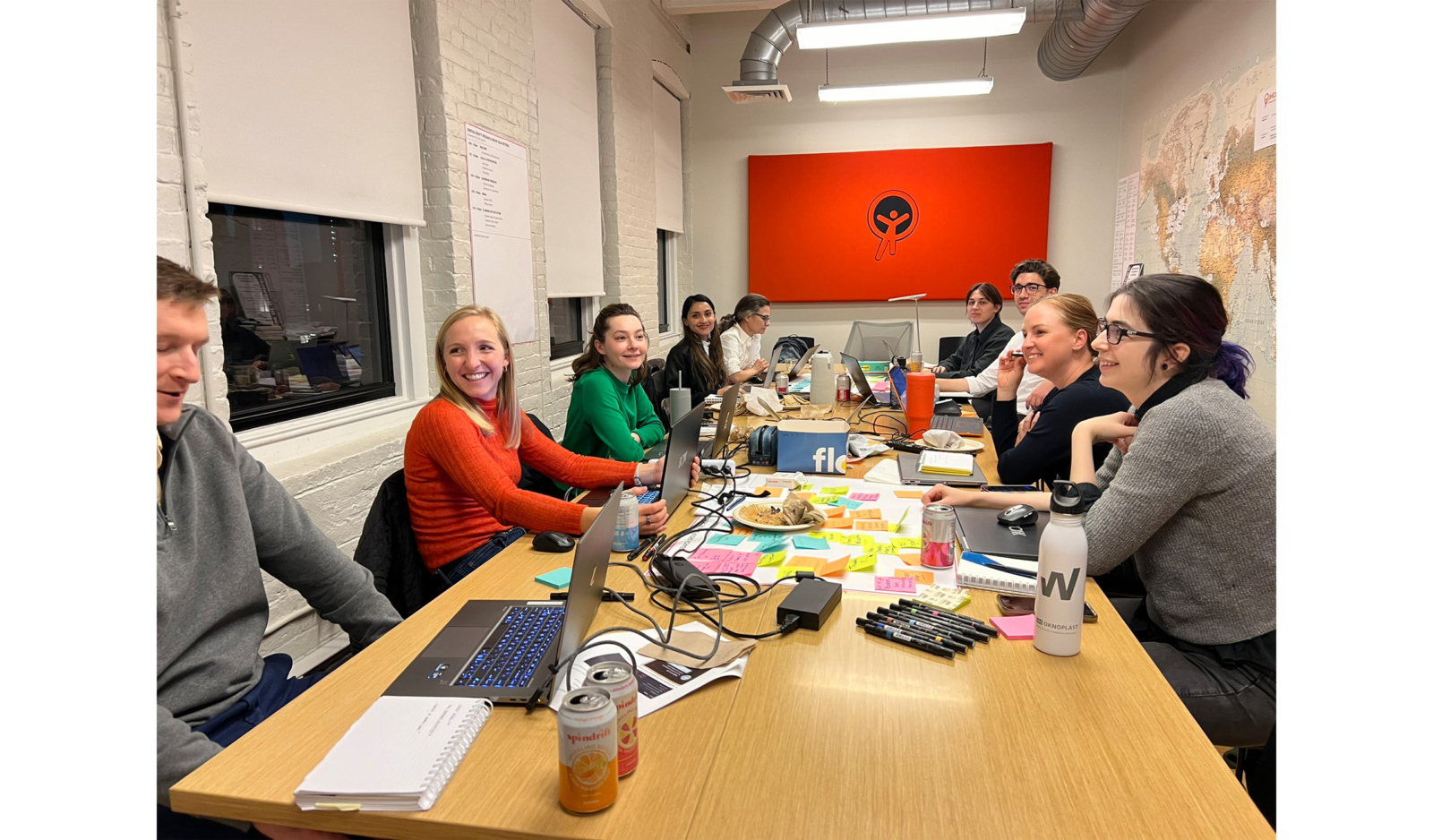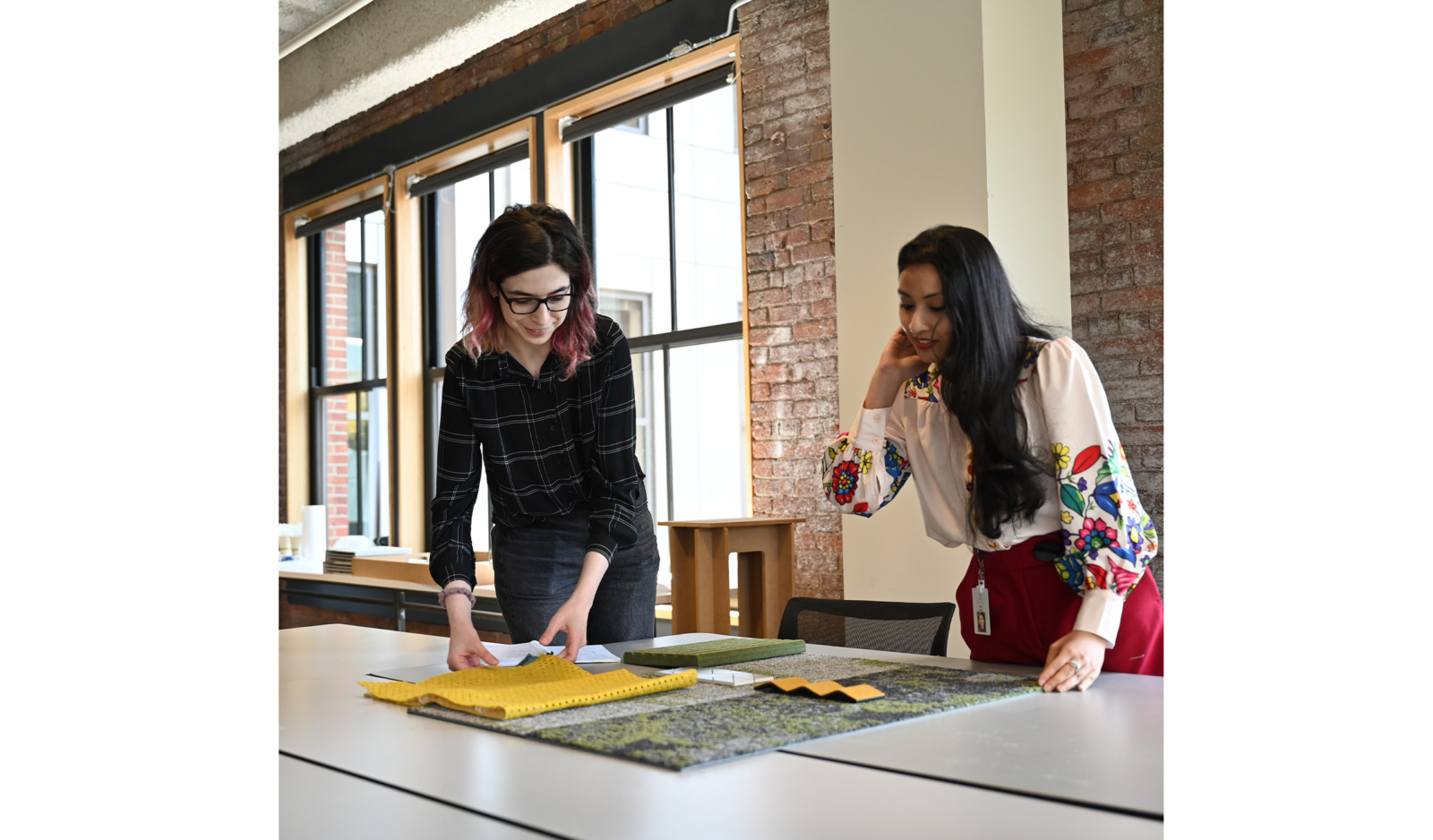At its core the Spatial Equity Research Group is interested in design through the lens of social equity, diversity, and inclusion. This post celebrates the research group’s 3 year anniversary.
The Spatial Equity Research Group was formed to delve deeper into design considerations that incorporate principles of JE:DI (Justice, Equity, Diversity and Inclusion). Founder of the Spatial Equity Research Group, Larissa Sattler, reflects on the trajectory of the research group over the last three years. The excerpts below highlight key milestones and goals for the Research Group.
What does JE:DI (justice, equity, diversity and inclusion) mean to you?
To me JE:DI does not mean just one thing. Our human population is constantly evolving and expanding. With it comes the ebb and flow of experiences, traumas, technological advances and social shifts that reflect upon our way of thinking and designing. In architecture we are constantly learning new things and adapting our practice to accommodate this breadth of fluctuation. Therefore how can JE:DI mean just one thing? Really it captures a wholesome desire to best serve the population we are designing for. I feel that the phrase “nothing about us without us” best reflects how to design with JE:DI. Designing for a community should involve that community.
What does “Spatial Equity” mean to you?
When I first started the Spatial Equity Research Group, my intent was to explore how our built environment could better integrate JE:DI. To me spatial equity is a term that encapsulates our efforts toward this goal. At a workshop I attended when first forming the Research Group, I heard equity in the built environment described as “a space where people feel a sense of belonging regardless of their personal identity.” This description has stuck with me throughout our research. I think that embracing the feelings and comfort that a sense of belonging can provide for people is an excellent goal for designing with equity in mind. Therefore, an equitable space to me is one that feels safe, provides a welcoming environment to everyone and respectfully acknowledges the community it is serving.
Why did you start the Spatial Equity Research Group?
Great question! My reasons for initiating the Research Group and keeping it going have certainly evolved over time. My initial motivation stemmed partly from my time living in St. Louis, which is a historically segregated city dealing with the repercussions of urban renewal. I was heavily involved in research on segregation by design in my local community in St. Louis and wanted to continue the work in my professional career. Bringing the knowledge and passion for equitable design research to PAYETTE encouraged me to start a research group to better disseminate the knowledge. Recently, my motivations for maintaining the Research Group have been to provide opportunities for knowledge sharing and creating connections in the community. I firmly believe that our efforts toward JE:DI in the built environment are stronger when we work together.
What are you most proud of?
There are two things I am most proud of (because it is too hard to choose just one). Both are related to outwardly sharing our knowledge. First, about a year ago we hosted a hack-a-thon on designing for neuro-inclusion. The enthusiasm on the topic was overwhelming and fellow colleagues still share their positive experiences today. This was one of the first opportunities where the Research Group shared our research with our project teams. Not only were we able to share highlights of our research, but we had a very active design charette. This helped to broaden our understanding of the feasibility and integration of neuro-inclusive design. We welcomed questions and challenges as tools for identifying gaps in our research. This was a successful opportunity to share our research and it acted as a launching point to deepen our research. Notably how neuro-inclusion could be incorporated into laboratory design where design already has its own challenges due to safety requirements and strict mechanical considerations.
Second, we recently presented at a BSA Summit (Boston Society for Architects). This moment felt bittersweet as we presented on the formation and growth of the Spatial Equity Research Group. Achieving our third anniversary is in itself a major milestone and having the opportunity to guide other firms on how to grow their internal research felt amazing. I am so proud we were able to form many new connections to create a network of shared resources. This research only gets stronger and can excel faster as a collective.
Why do you find this research valuable?
Considering how efforts around researching sustainable design have grown over the last decade, I would say that research on equity in design is not dissimilar. When sustainability in architecture was first considered it was met with some hesitation and skepticism. I have felt similar hesitation in researching equitable design strategies. On the topic I have heard questions and comments such as “Will this cost more?” “Does our building have space for equitable design?” and “Will this delay the project completion timeline?” I imagine that these were similar questions brought up when sustainability was first discussed. We have now learned that sustainability can actually provide cost savings in the overall life cycle of a building and has little impact on the design schedule when integrated early in the design process. Drawing a parallel to equitable design, I would argue that if this process is integrated at the beginning of the design it too could provide comparable costs and design timelines to a building designed without an equitable process. Therefore, similar to sustainability, equitable design should become a priority.
What are your future goals for the Spatial Equity Research Group?
Reflecting on the previous three years, I am encouraged by the impact we have had on our own practice. I am impressed by the amount of educational content we have produced, people we have interviewed for their lived experiences and project teams we have assisted. I would like to continue bringing this knowledge into our work. As we move forward, I foresee that our goals will shift towards producing more external work in the form of hosting workshops, presentations and design charettes. Growing strong roots in the community is one of our next goals.
We recently visited the Institute for Human Centered Design in Boston where we huddled together in a conference room to brainstorm what the future of the research group could look like. We were inspired to consider our next topic of research and commit to deepening our current research, which would provide rich resources for our project teams.
What are you currently working on?
Not giving up. Period.
This was a phrase I recently heard at the 2024 Women’s Leadership Summit from Sumayya Vally, the founder of Counterspace, and it resonated deeply with how I feel about the work toward equitable design. She spoke about her experiences and outside criticism when designing spaces with indigenous and diasporic identities. One of the most critical things about her work is an ever-enduring effort to not give up, to have the voices of indigenous and minority people heard through the spaces that she designs.
Similarly, one of my goals is to provide equitable designs where the voices of the community can be represented. This involves the sometimes tiring work of pushing against critics for ideas surrounding JE:DI and the community’s representation. In other words – not giving up.





